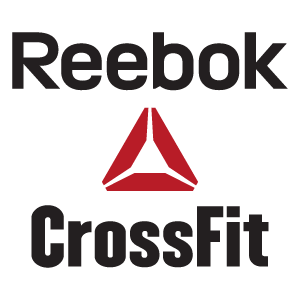Sprint training and sprinting will help you build muscle and increases the size and strength of powerful, fast-twitch fibers in your body. Running crops up in many Crossfit workouts over a huge variety of distances, yet most athletes tend to think more about improving their running for longer distances. There are many benefits to working on your sprinting and speed that carry over into other areas of your fitness. Explosive power is exceptionally useful for all Crossfitters. Also think back to the CrossFit Games with events such as the Suicide Sprints or Zig Zag. These were both purely sprinting events, and they showed the importance of strong running technique, agility and speed.
SPRINT TRAINING INCREASES ENDURANCE AND WORK CAPACITY
Sprint training improves your capacity for endurance, maximal oxygen uptake and raises your ability to withstand fatigue.
- Sprints require the body to use energy more efficiently by increasing the amount of glycogen that can be stored in the muscle by as much as 20 percent.
- They “train” the body to burn fat for fuel, preserving muscle glycogen and prolonging work capacity.
- Intervals increase the body’s ability to remove waste products during exercise, leading to a 50 percent increase in what is called the muscle buffering capacity.
SPRINTS IMPROVE INSULIN SENSITIVITY AND ENERGY USE
Any time you alternate intense bursts of exercise with rest periods, you will improve insulin sensitivity and blood sugar tolerance. This is partly because sprints decrease chronic inflammation and partly because the cells must adapt to more efficiently produce energy to keep you going.
Sprints improve insulin health in the young, old, overweight, diabetic, and folks with metabolic syndrome. As mentioned early, they increase fat burning during training and lead to a measurable post-workout calorie burn (called EPOC). Throw in the fat burning hormone response to training and you have a potent fat loss environment.
SPRINTS IMPROVE CONDITIONING, CIRCULATION AND LUNG FUNCTION
Sprint training is better for improving pulmonary lung function than almost any other aerobic exercise.
For example, a 23-minute sprint workout that included five 1-minute intervals (with 3 minutes rest) significantly improved lung capacity compared to an aerobic protocol. Sprint participants also lowered cholesterol and improved circulation.
Think of different Benchmark Workouts:
“Kelly”
Five rounds for time:
- 400-meter run
- thirty 24-inch box jumps
- thirty 20-pound wall ball shots
“Nancy”
Five rounds for time:
- 400-meter run
- fifteen 95-pound overhead squats
And remember that in every CrossFit Games, there has always been at least one sprint Event. Here is the women’s event from the 2016 Games.
Suicide Sprint is LIVE on ESPN3 (#WatchESPN) and https://t.co/Yx6TrO92I8 (Outside US)
https://t.co/mDHQw2GhVJ
— The CrossFit Games (@CrossFitGames) July 24, 2016
However, these longer workouts are not about improving your 400-meter sprint performance.
The metabolic hit that these workouts deliver to the oxidative system is very strong, so you fatigue quickly and the 400-meter runs become like a jog (or maybe a cruise for the fitter athlete); they are not 400-meter maximal sprints.
“To get better at sprints you need to sprint”
So, it sounds obvious but if you want to improve sprints you have to sprint. Like I mentioned before, the 400m running sections within these WODs are not sprint-training. Vary the intervals and change the distance to test yourself in different ways.
THE START OF EVERY SPRINT IS VITAL
Ben Johnson and Carl Lewis contested many 100-meter sprint races in the late 1980s. Who was the faster runner out of Johnson and Lewis? The answer is Carl Lewis despite the fact that Ben Johnson, at his best, would consistently beat him at 100-meter races.
How come? Lewis had a fractionally faster top speed, but Johnson was a better accelerator; he came out of the blocks quicker and reached his top speed sooner. So by the time Lewis reached his, slightly higher, top speed, Johnson was far enough ahead to hold on for the win. In the 100-meter sprint, acceleration over the first 10 meters can make the difference in who wins.
2016 Games: Suicide Sprint / Final Heat
Suicide Sprint | Sooooooooo … what can’t Mathew Fraser do?
Posted by The CrossFit Games on Sonntag, 24. Juli 2016
SPRINT TRAINING WORKOUTS
5 rounds- Every 2 minutes
100 m sprint (run)
- 1 @ 85%
- 1 @ 90%
- 3 @ 100%
rest 3 minutes, then:
5 minute EMOM:
50 m sprints. All at 100%
SPRINT WORKOUT
With a continuously running clock perform
- 1 sprint (10 meters) the first minute
- 2 sprints (10 meters) the second minute
- 3 sprints the third minute
and so on,
continuing to add 1 sprint each minute until you cannot complete the required number of 10 meter sprints in the given minute.
GERMAN MILITARY SPRINTING TEST
In the German Military part of the “Basic Fitness Test” is a 11 x 10m Sprint which fits quite perfectly into CrossFit Training.
You start face down on the floor, hands together on your back. When the workout starts, jump up and sprint for the 10m mark, turn around, sprint back, lay back on the floor, hands together, go again. This is way more exhausting than it sounds, imagine a fast mix of burpees and sprints!
With sprint training, it is important to remember that it is a very central nervous system (CNS) intense activity. Sprinting at near to maximum capacity, whilst not always fatiguing in the energy system sense, will fatigue the CNS. Generally, the body requires about 48 hours of recovery from a sprint session. Activities of similar intensity to sprinting, such as plyometrics or Olympic lifting, or indeed another sprint session, shouldn’t take place until then. The danger of attempting a sprint session in a fatigued state is that you increase the risk of injury. You will also not have as much of a high-quality session as if you were reasonably fresh, so the training process becomes less efficient and effective. Finally, performing sprint sessions in a fatigued state will deepen your fatigue, reducing the quality of subsequent sessions and increasing the amount of recovery you will need.
7 Important Gymnastic Exercises for Crossfitters and How To Master Them
The post How to Develop your Speed & Sprint Training For Crossfit appeared first on BOXROX.









